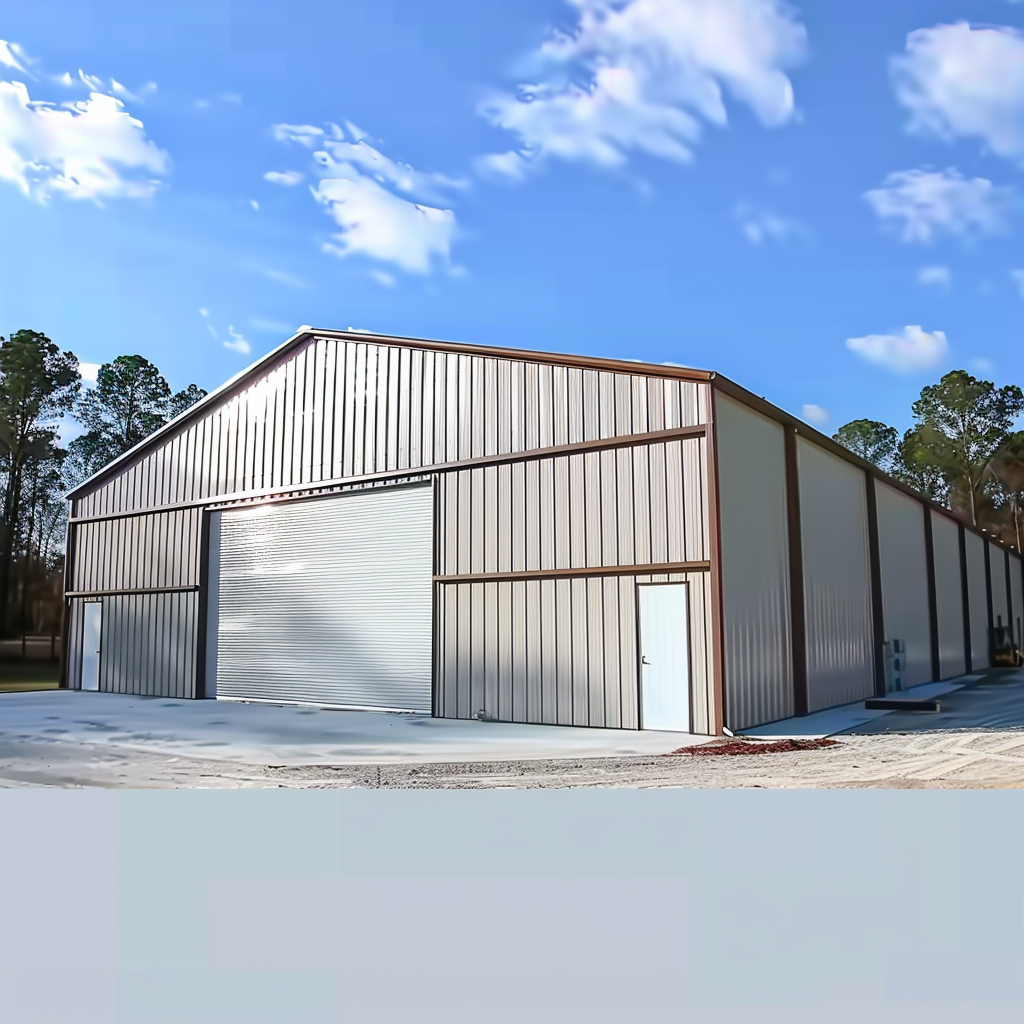Which Statement About Structural Steel Is Correct

Unveiling the Truths of Structural Steel
In the diverse realm of construction materials, structural steel stands out for its formidable combination of durability, flexibility, and sustainability. This blog post siphons through the prevalent assertions about structural steel and corroborates the statements that hold their mettle.
Versatility Personified
Let’s debunk a common misstatement first: 'Steel lacks the versatility for innovative architectural solutions.' On the contrary, structural steel’s versatility is its hallmark; it unveils a spectrum of possibilities for architects and engineers. The capacity to mold into almost any shape without compromising on strength nudges steel into the forefront of materials enabling modern architectural marvels. From the breath-taking arches of the Sydney Harbour Bridge to the exquisite exoskeleton of the Museo Soumaya in Mexico, steel bends both to the forces of nature and the artistic will of its human wielders.
Strength and Durability Durability
Another often contended statement is: 'Structural steel is susceptible to quick deterioration.' The reality is quite the opposite. Protected by galvanization or weathering steel techniques, steel can defy corrosion and stand tall amidst the assault of elements. Its robust character guarantees enduring structures that side-step the frequent need for repairs.
Sustainable Champ
Detractors might avow that: 'Structural steel is environmentally unsound.' This flimsy claim couldn't be further from the truth. Steel is a paragon of sustainability—it can be recycled indefinitely without losing its properties. In fact, it is the most recycled material on the planet, with many steel products containing a significant percentage of recycled content. Moreover, in their quest for zero waste, steel plants doggedly recycle their own by-products, including slag, dust, and water.
Speed of Construction
One might hear whispers in the industry saying: 'Steel structures take longer to build.' This, too, is a myth. With the advent of computer-aided design (CAD) and computer-aided manufacturing (CAM), steel components are prefabricated with laser-cut precision and ferried to the construction site ready for assembly. This results in significantly faster erection times in contrast to traditional construction methods, accelerating the return on investment for developers and delighting project managers with efficiency.
Cost-Effectiveness
A prevalent misunderstanding is that: 'Steel is prohibitively expensive.' While initial material costs may be higher in comparison to alternative materials like wood or concrete, steel's longevity and low maintenance reduce life cycle costs. Additionally, the architectural freedom it grants often leads to optimized designs that are technically and economically beneficial in the long run.
Fire and Pest Resistant
The assertion that 'Steel lacks the resilience to fire and pests' needs dissection. Steel is impervious to the common foes of construction materials: pests such as termites pose no threat to its integrity. While steel does lose strength at high temperatures, modern fireproofing techniques ensure that steel structures meet and exceed stringent fire safety standards.
Insulation Misconceptions
Lastly, the statement 'Steel buildings are poor insulators' is misleading. The insulated panels and advanced building systems used in tandem with structural steel provide excellent thermal performance, keeping interiors comfortable while minimizing energy costs.
In encapsulation, structural steel emerges as the indomitable juggernaut of the construction industry, its merits shining through centuries of architectural triumphs. Its celebrated properties augment the relentless pursuit of innovation within skylines across the globe, casting steel not just as a cold, inert metal but as the backbone of civilizations’ monuments, testaments both to utility and splendor.
From this weave of facts, it becomes clear which statements about structural steel stand corrected and which are relegated to mere misconceptions. For adherents of progressive architecture, structural steel offers a canvas of almost endless potential, one that bears the weight of dreams and elevates them towards the heavens.
As we continue to scout the frontiers of structural possibilities, let’s remember that the material holding our buildings up has a story of strength, flexibility, and environmental stewardship—a tale that, like the steel it celebrates, is unyielding.
In conclusion, the narrative around structural steel is one that must be consistently revisited and revised, not through anecdotal speculation, but by staring unflinchingly at the evidence etched in its ironclad edifice. Structural steel is, undeniably, a material for the ages.
How does the adaptability of steel play a role in construction?
The adaptability of steel plays a crucial role in construction by offering unparalleled versatility and innovation in building design and functionality. Here’s how:
Architectural Freedom: Steel’s structural properties allow architects to push the boundaries of traditional building designs. Its adaptability means that it can be fabricated into almost any shape, which opens up possibilities for innovative architectural concepts, including long spans and complex curves without compromising structural integrity.
Prefabrication and Modular Construction: Steel components can be prefabricated in controlled factory settings and then transported to the construction site. This adaptability in the manufacturing process not only ensures high-quality products but also speeds up construction time significantly. Modular steel structures can be easily expanded, modified, or relocated, offering flexibility in use and design for future needs.
Efficient Use of Material: Steel’s strength allows for slender construction elements, reducing material usage while maintaining structural integrity. This efficient use of materials contributes to cost-saving in both the short and long term, making projects more financially viable and environmentally friendly.
Sustainability: The adaptability of steel extends to its life cycle; it can be reused and recycled indefinitely without loss of quality, making it a highly sustainable construction material. The ability to repurpose steel elements for new constructions or other purposes ensures minimal waste and aligns with green building practices.
Ease of Installation: Steel components are lighter and easier to assemble than many other construction materials, allowing for quicker and less labor-intensive installation processes. This adaptability in the erection process can lead to substantial savings in both time and cost.
Integration with Other Materials: Steel’s versatility allows it to be used in combination with other construction materials like concrete, wood, or glass, enabling a wide range of aesthetic and functional building designs. This adaptability makes steel a preferred choice for hybrid structures that benefit from the unique properties of multiple materials.
Resistance to External Forces: Steel structures can be designed to adapt to various environmental challenges, including earthquakes, wind, and snow loads. The material’s ductility and flexibility mean that steel buildings can withstand these forces better than those made from more brittle materials, safeguarding investments and human life.
Future Modifications: The adaptability of steel supports future modifications with minimal disruption. Whether it's adding new floors, removing walls, or extending existing structures, steel buildings can be easily adapted to meet changing requirements, making them ideal for dynamic urban landscapes.
In essence, the adaptability of steel in construction allows for creative freedom, enhances efficiency, supports sustainable building practices, and provides solutions that can adapt to both the present and future needs. This unique combination of benefits solidifies steel’s position as a material of choice in the construction industry.
Can you explain how steel's adaptability contributes to the overall efficiency of construction projects?
Certainly, steel's adaptability contributes significantly to the overall efficiency of construction projects in several key ways:
Accelerated Construction Timelines: One of the most substantial benefits of steel's adaptability is the capability for prefabrication. Steel components can be engineered, cut, and assembled off-site in a controlled factory environment, then transported to the construction site ready for quick assembly. This process minimizes delays that can occur due to weather conditions and simplifies on-site labor requirements, accelerating the overall construction timeline considerably.
Design Flexibility: Steel’s strength and versatility allow for greater architectural freedom. It can support large spans, create open spaces without intermediate columns, and enable complex architectural shapes. This adaptability in design not only meets diverse aesthetic and functional requirements but also often leads to more efficient use of space and materials, optimizing the structure's overall efficiency.
Material Efficiency: The inherent strength of steel allows for slender member design, meaning larger spans and fewer materials are needed to achieve the same structural capability as other materials. This efficient use of material not only
How does steel demonstrate sustainability in construction?
Steel demonstrates sustainability in construction through several key factors that contribute to its environmental, economic, and social sustainability. These factors not only reduce its ecological footprint but also enhance the efficiency and lifecycle performance of buildings and infrastructure. Here are the primary ways through which steel exhibits sustainability in the construction sector:
Recyclability and Reusability: Steel stands out for its virtually infinite recyclability without loss of quality or strength, making it a champion of circular economy principles. Almost all steel can be recycled to produce new steel products, reducing the need for virgin materials and the environmental impact associated with their extraction and processing. Furthermore, steel components and structures can be reused in different projects, further reducing waste and resource consumption.
Energy Efficiency: The production of steel has become increasingly energy-efficient due to advancements in technology and processes. Modern steel mills use electric arc furnaces that can be powered by renewable energy sources, significantly reducing carbon emissions. Additionally, the lifecycle energy consumption of steel structures is lower thanks to their durability and low maintenance requirements.
Durability and Longevity: Steel's intrinsic strength and resistance to elements such as moisture, pests, and fire make it a highly durable construction material. This durability translates to longer life spans for steel structures, reducing the frequency of replacement and the associated environmental impacts. Steel's adaptability also facilitates the easy modification and adaptation of existing structures to meet new demands, further enhancing its sustainability credentials.
Efficient Use of Resources: Steel enables more efficient use of resources in construction through its high strength-to-weight ratio, allowing for the design of lighter structures that require less material without compromising on strength and stability. Prefabrication of steel components contributes to precision and reduces on-site waste, further optimizing resource utilization.
Reduced Environmental Impact: Steel industry initiatives, such as the development of advanced high-strength steels and the implementation of life cycle assessment (LCA) methodologies, aim to minimize the environmental impact of steel production and use. These advances have led to reductions in carbon emissions, energy consumption, and material waste.
Contribution to Sustainable Development: Steel structures contribute to sustainable urban development by enabling innovative architectural designs that can incorporate green building elements, such as green roofs and solar panels. Moreover, steel is essential in the construction of infrastructure that supports sustainable transportation, including railways, bridges, and energy-efficient vehicles.
End-of-Life Management: At the end of its service life, steel from demolished structures can be efficiently recycled or reused, minimizing landfill waste. This end-of-life management is pivotal in closing the loop of the material's lifecycle and ensuring that its value is retained in the economy.
In summary, steel's recyclability, energy efficiency, durability, and efficient use of resources underscore its role as a sustainable construction material. By minimizing waste, reducing environmental impacts, and supporting the creation of structures that are both versatile and enduring, steel significantly contributes to the sustainability goals of the construction industry.
What are some other ways in which steel contributes to the sustainability of construction projects?
Beyond its widely recognized attributes like recyclability, energy efficiency, and durability, steel contributes to the sustainability of construction projects in several additional, often overlooked ways. These contributions further emphasize the role of steel as a pivotal material in achieving environmental, economic, and social sustainability objectives in construction. Here are some notable examples:
Enhanced Thermal Performance: Steel components can be designed to contribute to the thermal efficiency of buildings. For instance, steel framing can accommodate high-performance insulation materials within its sections, reducing heat transfer and energy consumption for heating and cooling. This capability is crucial in minimizing the carbon footprint of buildings over their operational lifetime.
Reduced Transportation Impact: The high strength-to-weight ratio of steel allows for the construction of lighter structures, which translates to fewer transport loads compared to materials that are denser or provide less strength. Additionally, the ability to prefabricate steel components precisely means that larger elements can be transported and assembled on-site, reducing the number of trips required and the associated environmental impact.
Urban Heat Island Mitigation: Steel roofing materials can be treated with reflective coatings to reduce heat absorption, mitigating the urban heat island effect. These cool roof technologies contribute to lowering indoor temperatures, reducing energy consumption for air conditioning, and improving urban air quality.
Cradle-to-Cradle Lifecycle: The concept of a cradle-to-cradle lifecycle is well exemplified by steel, which can be continuously recycled without degradation of its properties. This approach ensures that steel used in construction today can be remelted and reformed into new steel products in the future, embodying the principles of a circular economy and reducing the demand for raw materials.
Flexibility in Design for Future Adaptability: Steel's versatility in design not only allows for innovative architectural expressions but also ensures buildings can be easily adapted, updated, or repurposed. This adaptability reduces the need for new construction materials and lowers the environmental impact associated with building demolitions and reconstructions.
Contribution to Green Building Ratings: The use of steel can contribute significantly to a building's ability to meet green building certification standards, such as LEED (Leadership in Energy and Environmental Design) or BREEAM (Building Research Establishment Environmental Assessment Method). Criteria such as material efficiency, energy performance, and resource recyclability are positively influenced by the incorporation of steel, aiding projects in achieving higher sustainability ratings.
Support for Renewable Energy Infrastructure: Steel is a critical component in the infrastructure needed to harvest renewable energy sources. It is used in the construction of wind turbine towers, photovoltaic panel frames, and hydroelectric power station structures. By enabling the expansion of renewable energy infrastructure, steel plays a direct role in reducing dependency on fossil fuels.
Water Conservation: Steel production processes, particularly in state-of-the-art facilities, increasingly incorporate water recycling and conservation measures. This approach reduces water withdrawal from natural sources and minimizes the impact of steel production on water resources.
By encompassing these diverse aspects, steel's contribution to sustainability in construction projects is multifaceted, addressing not only immediate material considerations but also broader environmental and societal impacts. These contributions highlight the importance of considering the full lifecycle and broader system impacts of construction materials when assessing sustainability.





